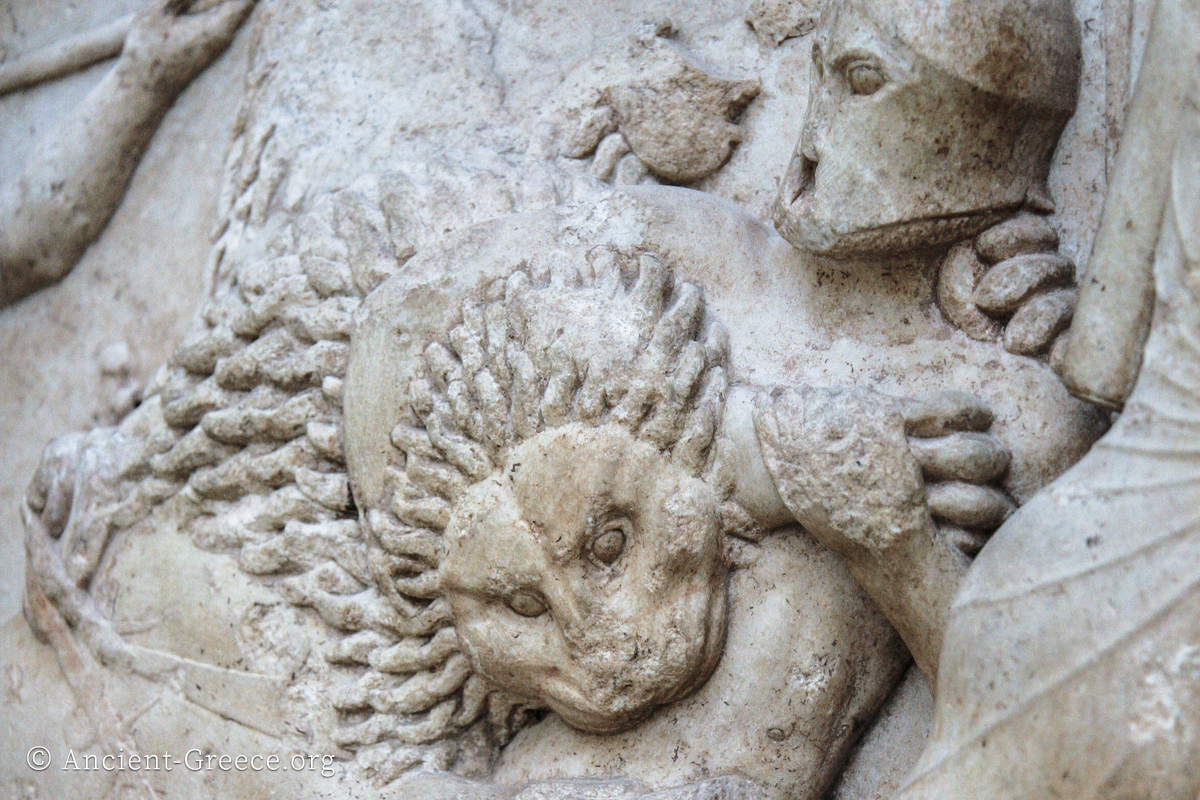
On this page:
The Siphnian treasury was dedicated at Delphi around 525 BCE by the inhabitants of Siphnos island which is located in the western Cyclades, in the Aegean Sea.
In ancient Greece it housed the votive offerings of the Siphnians to the sanctuary, and it was positioned along the main road to the temple of Apollo alongside other city-state’s treasuries.
Herodotus and Pausanias tell us that it was built using 10% of the profits from the exploitation of the island’s gold and silver mines (Petracos, 14).
It is an elegant building of the Ionic order. The exquisite sculptures on its pediment and frieze depicted various scenes from Greek mythology.
The east pediment sculptures tell the story of Apollo quarreling with Heracles. The Ionic frieze has scenes from themes like the Trojan War, Gigantomachy, the Judgment of Paris, and and an abduction of a female from a shrine.
One of the unique characteristics of the Siphnian treasury is the use of two caryatid statues at the facade instead of the customary columns.
East Pediment



The pediment and part of the frieze from the east facade of the treasury of Siphnos. The pediment depicts the dispute between Heracles and Apollo for the oracular tripod. Zeus in the middle is trying to mediate. 525 BCE.
East Frieze






The Siphnian Treasury’s east frieze depicts a gathering of gods on the left and scenes from the Trojan War on the right. 525.BCE
Characters depicted on the frieze from left to right: Aris, Aphrodite, Artemis, Apollo, and Dias (Zeus), Athena, Hera, Demeter, Trojan Chariot, Aeneias, Hector, fallen combatant, Menelaus, Ajax, and Greek chariot.
North Frieze






Treasury of Siphnos north frieze. The relief sculpture depicts a Gigantomachy (the battle between the Olympian gods and the Giants). 525 BCE.
One of the scenes include a lion attacking a giant while Apollo and Artemis pursue a fleeing giant who is running over a fallen body toward three other giants.
Another scene shows Ares over the giant Astartas who is dead on the ground, fighting with the giants Biatas and Enaphas .
West Frieze


The sculptures of west frieze of the Siphnian treasury depicting the Judgement of Paris. 525 BCE.
South Frieze



The sculptures of south frieze of the Siphnian treasury probably depicted the abduction of a woman with the 525 BCE.
Caryatids




Architectural elements from the Siphnian Treasury. 525 BCE.
Left to right: Cornice fragment of the south frieze, reconstruction drawing of the treasury from the Delphi Museum, and fragments of the two Caryatids.

